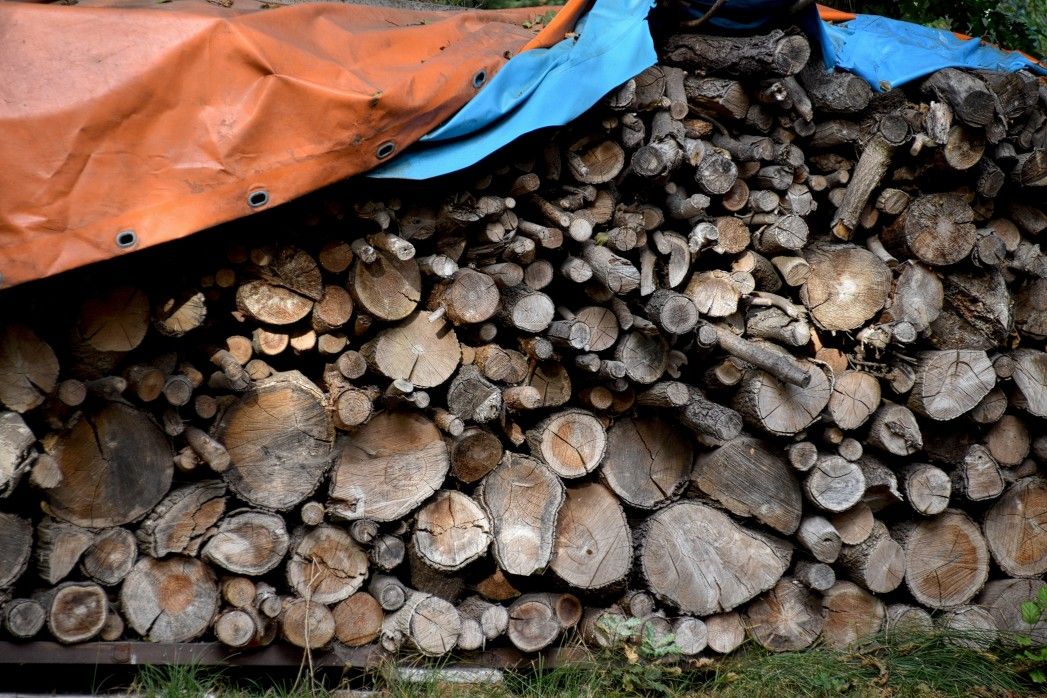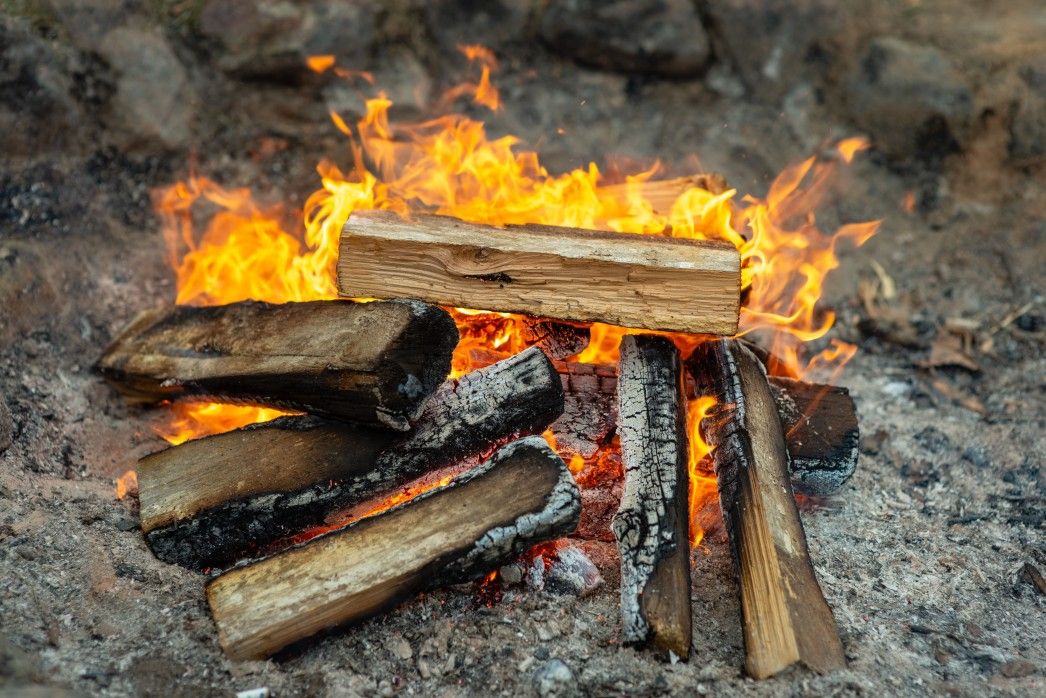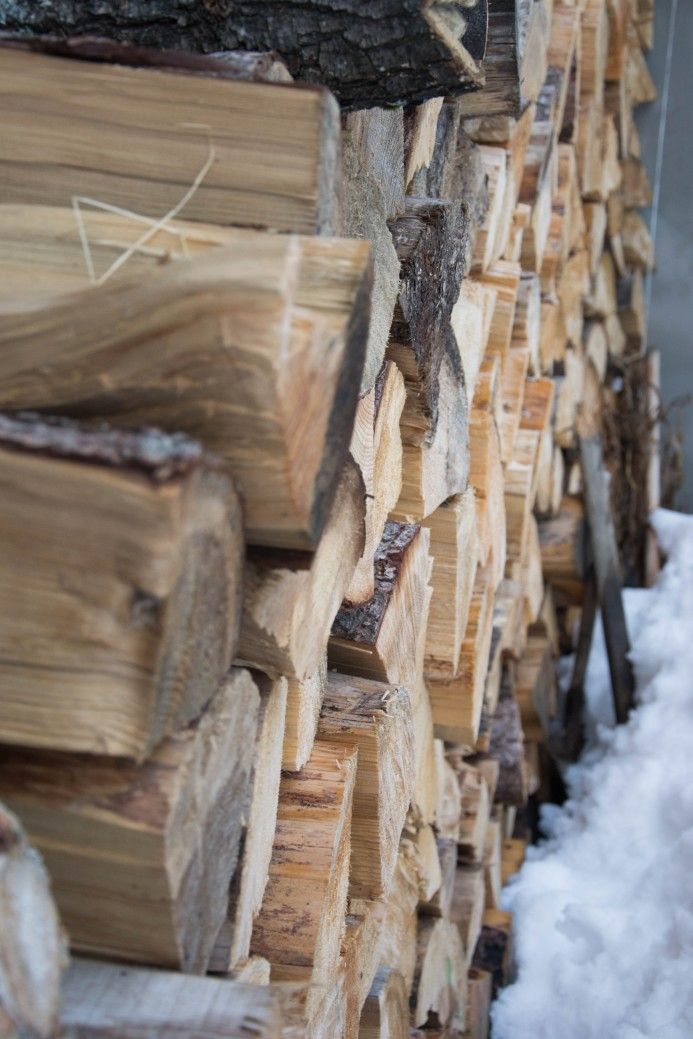If you are seasoning firewood for the first time, you need to know the ideal moisture content for firewood. From how to test firewood moisture content to how and why your firewood may be too dry or too moist, understanding moisture content basics is extremely helpful when learning to season your firewood.
In this article, we discuss all of the above and then some. We even included a firewood moisture content chart for the most common firewood types.
What is the Ideal Moisture Content For Firewood?
Properly seasoned firewood should have a moisture content of less than 20-percent. When wood is first cut, it has a lot of moisture. In fact, up to half the weight of green firewood is water! While drying out your firewood takes time, it's worth the effort. Firewood with the ideal moisture content burns at peak efficiency. This is because wood burns in three stages.
The first stage of a wood fire is water evaporation. When your firewood moisture content is less than 20-percent, evaporating water consumes only a small portion of the fire's heat. It will light much quicker, letting you save on kindling.
Greenwood will consume much more of the fire's heat to burn off the firewood's excess water. This will result in a slow-starting fire that sputters and hisses while staying at a cooler temperature than a seasoned wood fire.
Once the water has evaporated from the wood, your wood fire will start burning smoke. This produces most of your fire's heat. However, it requires extremely high temperatures and adequate oxygen flow. Achieving the ideal firewood moisture content will maximize the burn in this stage, reducing the amount of wasted smoke.
When smoke isn't burned, it's exhausted through your chimney, where it can condense to form creosote. This is why dry firewood burns more cleanly and completely than wet firewood.
Firewood should be shielded from rain with a tarp or roof, but not sealed tightly or covered fully.
How can you check the moisture content of firewood?
The last stage of a wood fire is the charcoal burn. Once your firewood has given up all its combustible gases and tars, pure carbon in the form of glowing charcoal remains. It generates a clean heat with almost no smoke production.
However, wet wood forms far fewer coals than seasoned wood. When you burn firewood with the ideal moisture content, less than 20-percent, you'll maximize the amount of charcoal produced and generate more heat from your fire.
There are a few quick tests you can do to check if your firewood is dry.
One is to bang two pieces of firewood together to see what sound they make. Dry firewood will make a crisp, hollow ringing sound. Another way to check for moisture is to place dish soap on one end of your log. Then place your mouth on the other end and blow through the log. If the soap forms bubbles, too much moisture remains in the firewood.
However, these tests are imprecise and could lead to burning firewood that is too wet.
The best way to check the moisture content of your firewood is with a firewood moisture meter. This relatively inexpensive tool will give you a precise measurement of the moisture content of your wood. To use a moisture meter, you'll need to split a piece of firewood to test.
The highest level of moisture is in the center of the firewood log. If you test the end of a firewood log without splitting it, you could get a false low-moisture reading. Place the two prongs against the center portion of the newly split side of the firewood. The device will give you a percentage value for the moisture content of the wood.
Don't stop with one reading. Press the meter deeper into the wood. Water can hide between the wood layers, so you may see a variation in the moisture content.
How to use a moisture meter to check your firewood moisture content
- Split a piece of firewood you want to test for moisture content.
- Place your moisture meter against the freshly split side in the center of the log.
- Check the moisture reading. If the meter reads a moisture content of 20-percent or less, your firewood is dry enough to burn.
Can Firewood Be Too Dry?
Some experts will argue that more time spent seasoning firewood is always better—the less moisture in your wood, the less heat wasted on evaporating water. However, you want your firewood to have some moisture, ideally above 10-percent. This regulates the burn in your wood stove and prevents the wood from burning too quickly.
The good news is that over-drying your firewood is difficult to do. The natural humidity of the outdoor air surrounding the firewood will prevent it from reaching a moisture content of less than 10-percent. However, if you live in a desert climate with very low natural humidity, you could dry firewood too much if you let it season for years.
Visually inspecting your firewood for signs of proper seasoning will help prevent you from over-drying your firewood. If your wood is gray, has lost most of its bark, and feels light, it might be time to move the wood inside. This will stop the drying process and prevent you from having over-seasoned wood.
Since outdoor seasoning of firewood can take up to two years, you may want to speed up the process. Using heat will drastically reduce the amount of time required to season firewood. It also increases your risk of drying out the firewood too much. Always check your firewood moisture throughout the drying process and stop oven drying when the firewood moisture content reaches 20-percent.
If it's too late to prevent over seasoning your firewood, you can still burn the wood. Simply mix it with wetter wood to create a fire with the correct moisture content.
Properly seasoned wood burns cleanly and easily.
What happens when firewood is too dry?
Bone dry wood is great for your kindling, not so much for your main firewood. A fire made with wood that has less than 10-percent moisture will burn hot and fast. It can be difficult to manage and cause damage.
This is because firewood that is too dry will skip the first stage of burning. Since almost no water needs to evaporate, the fire immediately enters the second stage of burning, generating a massive amount of smoke and heat from your fire. You may notice a few problems as a result of this increased smoke and heat.
Temperatures could get so high that they damage the inside of your wood stove or fireplace.
Burning firewood with at least 10-percent moisture helps to regulate the burn. Some of the fire's energy goes into evaporating the moisture, preventing a burn that is too hot and fast.
You'll have shorter fire cycles.
A typical fire can take between 4-8 hours to cycle through all the stages of burning. Over seasoned wood will burn through the stages in less time. If you want to provide consistent heat for your home, you should use firewood with more than 10-percent moisture to regulate your fire cycles.
Your fires will have more emissions.
Over seasoned wood skips the first stage of burning and creates a massive amount of smoke. Most wood stoves and fireplaces can't pull in enough oxygen to fully combust the smoke. The result is unburned smoke that exhausts out your chimney, increasing the emissions from your fire.
You could damage your stove.
Dry wood burns hotter than wet wood. A fire built with too much dry wood can reach temperatures of over 1000℃. Such extreme temperatures could cause damage to the inside of your stove. If you haven't had your chimney cleaned, the high temperature could set creosote deposits on fire. Therefore, it's important to always build a fire with wood that has at least 10-percent moisture to ensure safety.
Firewood Moisture Content Guide
Firewood preparation can take up to two years. A moisture meter can help monitor the drying process.
Apple: An expensive firewood that creates a pleasant smelling fire. Green applewood contains about 60-percent moisture. You should season apple firewood for at least one year.
Ash: Green Ash and White Ash are the most common varieties used for firewood. Logs contain roughly 33-percent moisture content when freshly cut. Season for at least six months to reach less than 20-percent moisture content.
Birch: Black and yellow birch trees make quick-burning firewood great for starting fires. Freshly cut birch will have a moisture content of around 44-percent. You should season birch firewood for at least six months.
Cherry: Cherry firewood is a great option if you are looking for a pleasant smelling fire. You'll need to season cherry firewood for at least two years since green cherry wood has a moisture content of approximately 70-percent.
Hickory: Shagbark Hickory is the most common variety used for firewood. It's recommended to season hickory firewood for at least one year. Green hickory has a moisture content of roughly 40-percent.
Maple: All varieties of hard maple trees make good firewood. Logs contain roughly 45-percent moisture when freshly cut. You'll want to season maple firewood for at least six months.
Oak: White, red, and black oak all make excellent firewood that burns long and slow. Freshly cut oak will have a moisture content of around 60-percent—season for up to two years.
Walnut: Black walnut is the most common variety for use as firewood. You should season walnut firewood for at least one year since it has a moisture content between 70-80-percent when first cut.
A Final Word About the Ideal Firewood Moisture Content
Knowing the ideal firewood moisture content helps you get the most out of your firewood. Properly seasoned firewood with the perfect moisture content level burn longer, hotter, and produce less ash and smoke. What's not to love?
Why burn more wood than necessary and smoke up the house while doing it? No matter what type of firewood you use, make sure your firewood has the ideal firewood moisture content before throwing it in the stove or fireplace.
Do you have a tip or trick that helps you keep your firewood at the ideal moisture content? If so, we'd love for you to share the wealth with our audience in the comments section below!
Need a place to store firewood? Check out our latest guidepost on the best firewood racks.




